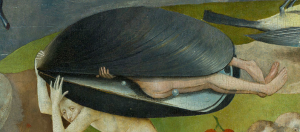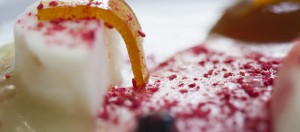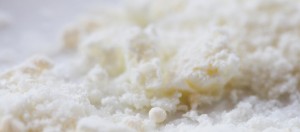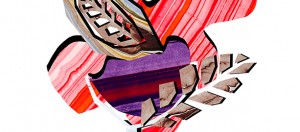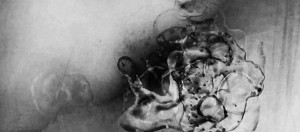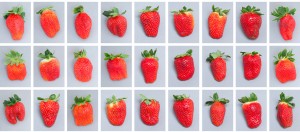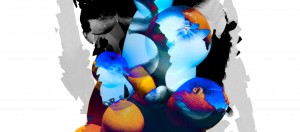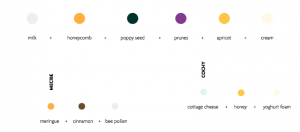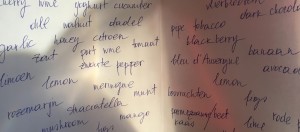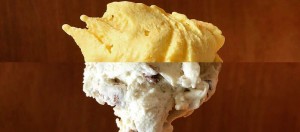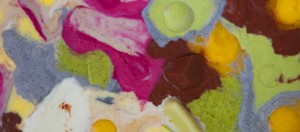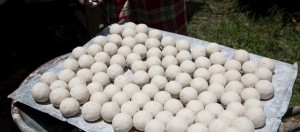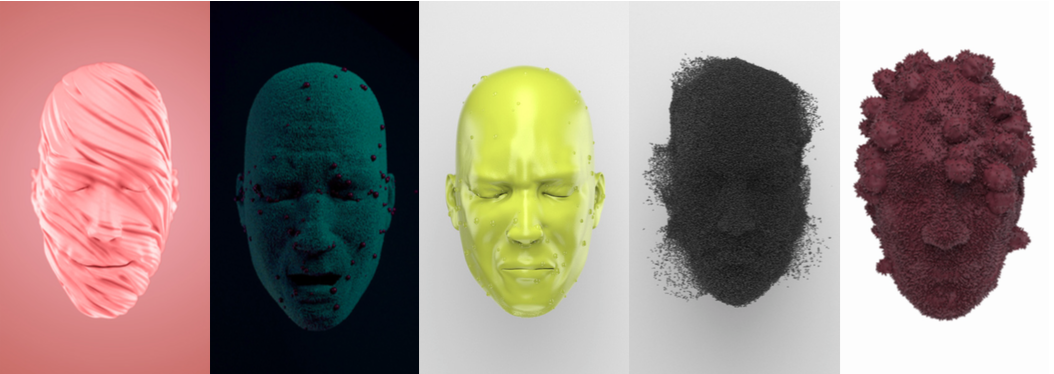
For the third chapter on Taste of our Sub-Zero Investigation, we invited food designer Laila Snevele to collaborate with us and participate in one of our dinners with her work ‘Digital Seasoning’. This project comprises a series of 3D visualisations depicting each of the five basic tastes - sweet, bitter, salty, sour and umami. The idea is that people, being empathic creatures, can experience taste by the mere observation of others. Adding ‘digital seasoning’ to a dish can potentially boost our perception of flavours and enrich the experience without adding extra components to the food. We sat down with Laila to talk about mindful eating, multisensory experiences and if we are entering the fur of food.
What motivated you to begin the project Digital Seasoning?
It was really the Charles Spence book and his research on multisensory experiences. I was completely blown away. So I was interested in combining aspects of a multisensory experience he’s talking about - colours, shapes, etc. If I can bring all these elements together and reshape them into something, could I create the taste without anything in your mouth? I realised that I cannot create a salty taste, I needed to get into the brain to create something without it being there. That was the goal. However, it really depends on the taste you’re trying to recreate. With sour I think it is working well, but some, like salty, is a different question.
Why is salty more difficult than sour?
Because sour is a very visual taste, we have formal expressions to express something being sour. Besides that, you also have to be more empathetic in order to have the digital seasoning have effect on your. For people who are not empathetic even the sour is difficult to imagine.
Can you tell us about other projects you have worked on that relate to the subject of multisensory experiences?
In 2018, I graduated from the Eindhoven Design Academy Food Non Food department. I have always had an interest in food. I was fascinated by different ways of eating and tradition. What is acceptable? What is unacceptable? I’m interested in the visuality of food - different shapes, colours, textures. Where does it come from? We look at fruits and we say it’s nature, but is it? Often they are engineered products for the consumer. I actually never knew that food design was even a study before the Food Non Food department came along. The freedom of seeing food as a material to design with was fantastic. For most of the projects, I would always start with colour because it has so much information on its own and we can tell so many stories through it. Most of the times I have a story of colour and food or event around food. When they come together, they influence each other so much that they change each other completely. For one project I looked into the influence of colour in fast food. I took doughnuts as an example, most of the time they are pink, yellow, cream-colour, but I made them blue. Which made the dish less appetising. That’s the reason why I used blue for visualising bitter because we associate bitter with being poisonous and therefore try to stay away from it.
What do you think about a simulation of an experience in the case of Digital Seasoning?
I haven’t thought of it as a simulation, actually. What I think is nice about this project is that it is creating real life experiences, but then using a different source. The goal of this work was to show that they have access to different stimuli, that they can compare the experience they’re getting. You can have the same experience, but by changing some elements, your perception changes. Every day we have information around us that affects the way we experience taste, but we are not aware of these influences because we are confronted with the one scenario we are in. We never know how something would taste in a different surrounding. When the environment changes, our experience changes too, but we often don’t understand why. By placing them in this situation (of Digital Seasoning), I open up people’s awareness of their own comparison and encourage mindful eating.
And how do you envision the future of food design?
It’s a very good question. I think it’s gonna grow pretty big because we are starting to understand the importance of how much design can change - it can be culture, it can be supermarkets, production, transformation or sensory science. Food design will be a big part of food industry. It’s still quite new as a term, so people don’t really know what to ask from us. A lot of food designers also don’t know yet what they are doing nor how to define it, but it will become more concrete. Eventually people will know what they want from us.
How do you view digital seasoning personally? Do you see it as replacing substantial seasoning or do you think it is a mere speculation?
When I was working on it, I thought it could replace the actual seasoning. But now I see it as a step into the process. I’m thinking about next steps and how far it can go. It’s a playful tool from which I can get a lot of information. I will make sure that in the future there’s a device that replaces salt and sugar. I don’t want to be the person who says we should not eat sugar or salt. But what if we’ve been eating wrong till now? If there would be a scenario where we would eat digitally and it would become completely normal, we would look back at today and would think why would people eat these amounts of sugar. It would probably cut the pros of having sugar, but it will also open up a lot of other possibilities. I think it’s possible to change our behaviour towards the consumption and production of salt and sugar.
What would be the next step for you?
I am planning to see this scenario (of no sugar, no salt, no citric acid) as a reality, I’m going to do more research and reshape processed food. I imagine it having no sugar, no salt. That can be achieved by discoveries. What is the sweetest shape? What is the sweetest texture? What is the sweetest colour? I’m going to live in my own reality. That’s what I have decided to do.
For more information about Digital Seasoning and other work by Laila Snevele, take a look at her website: https://lailasnevele.com
